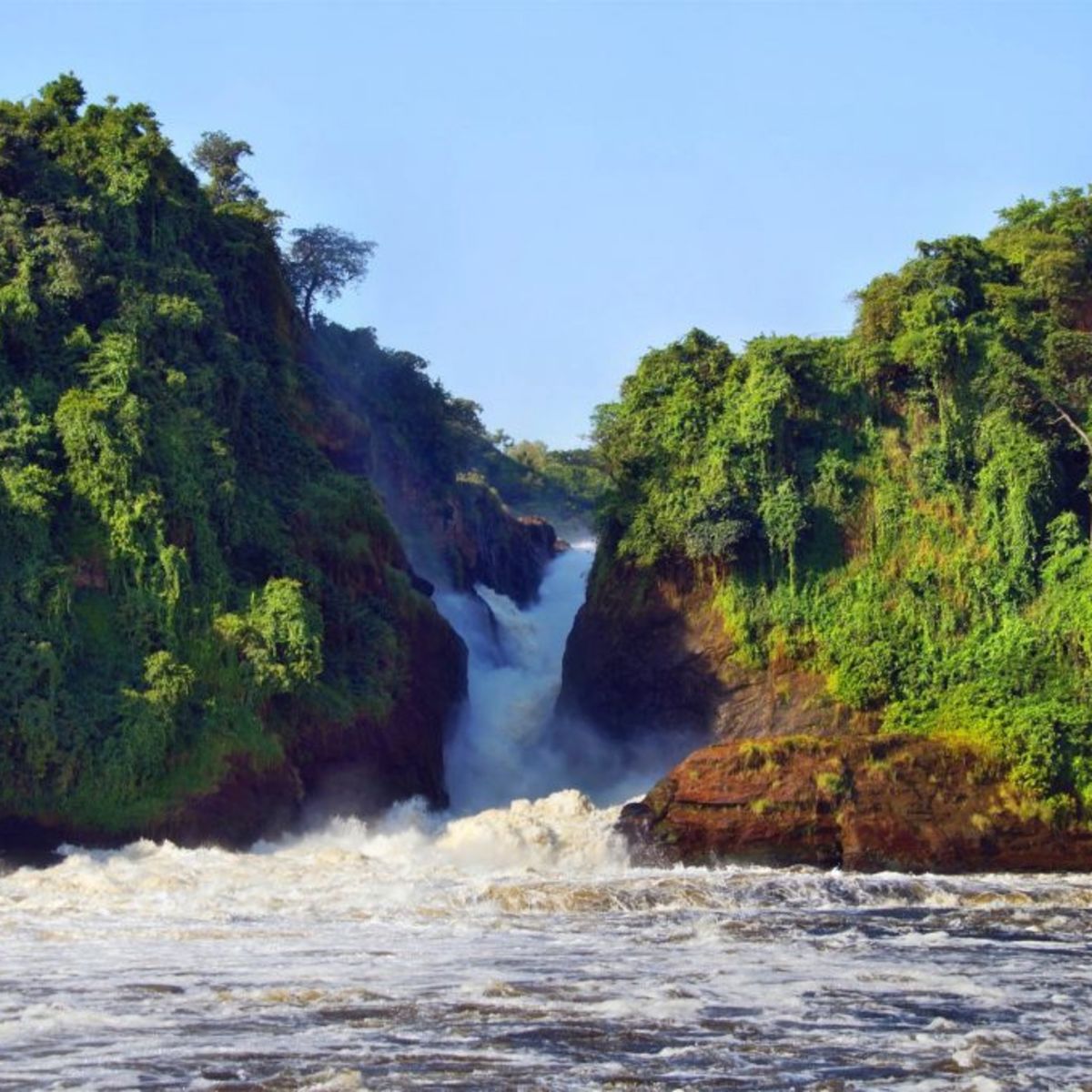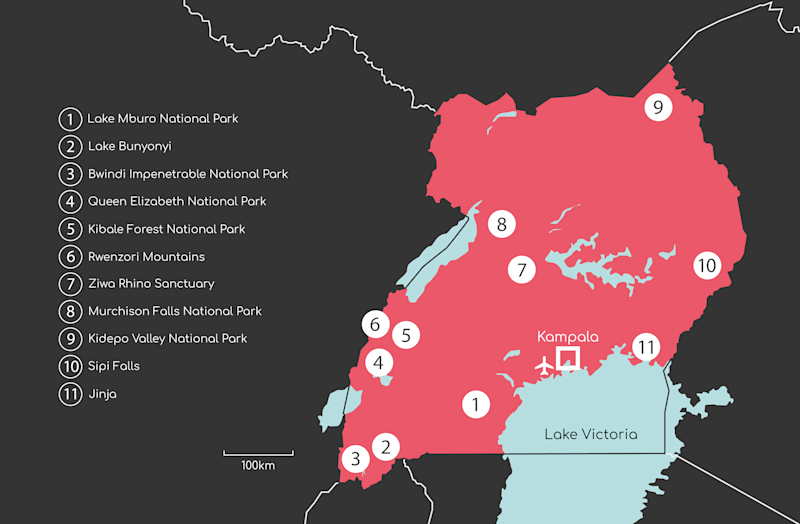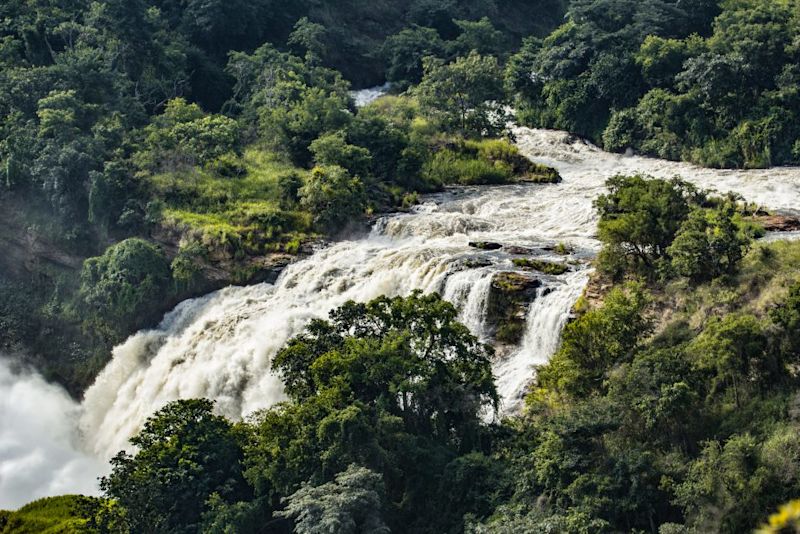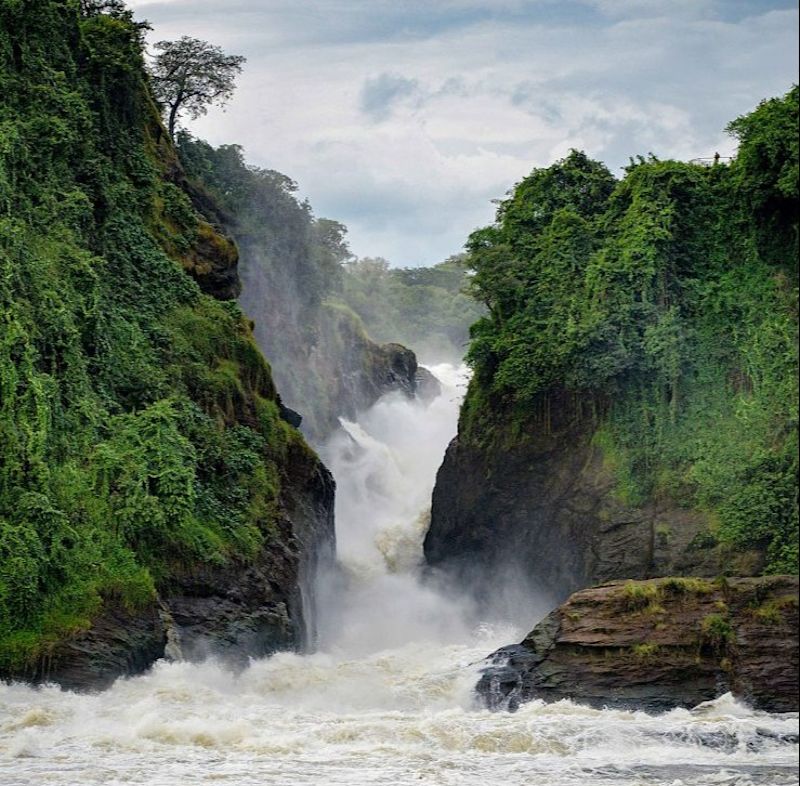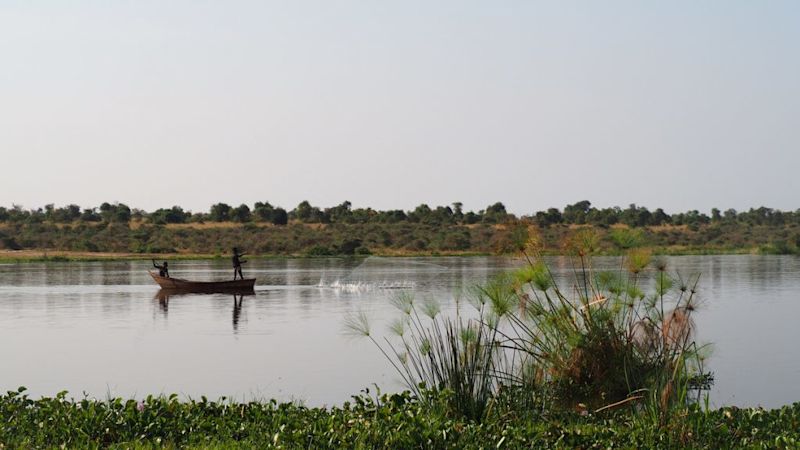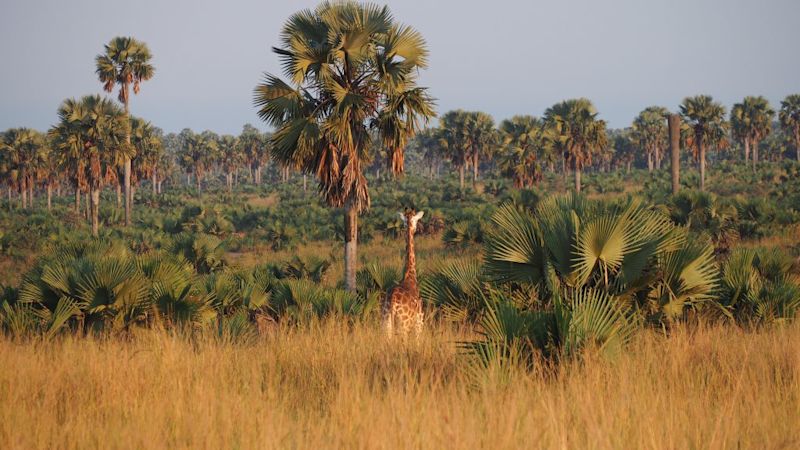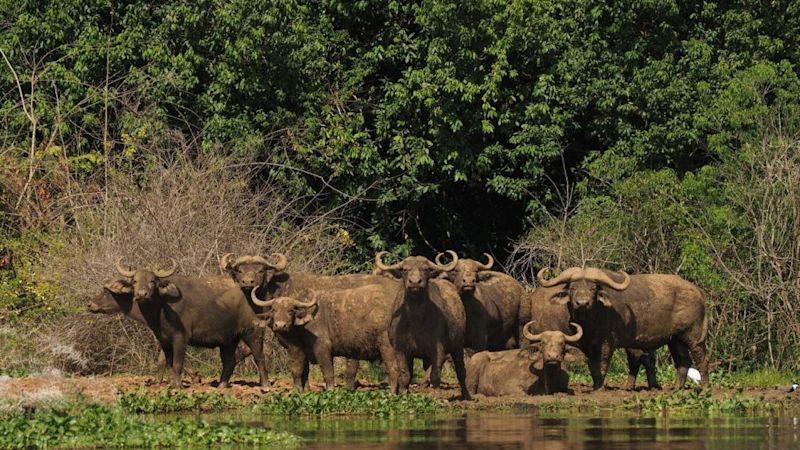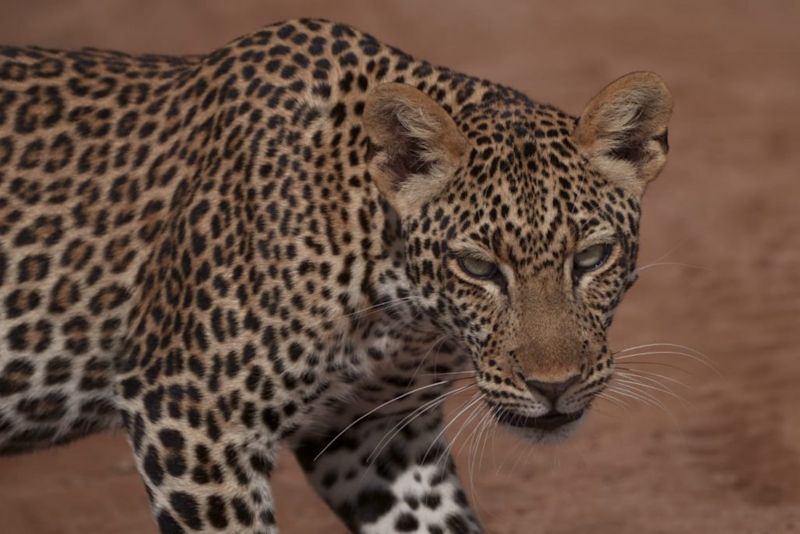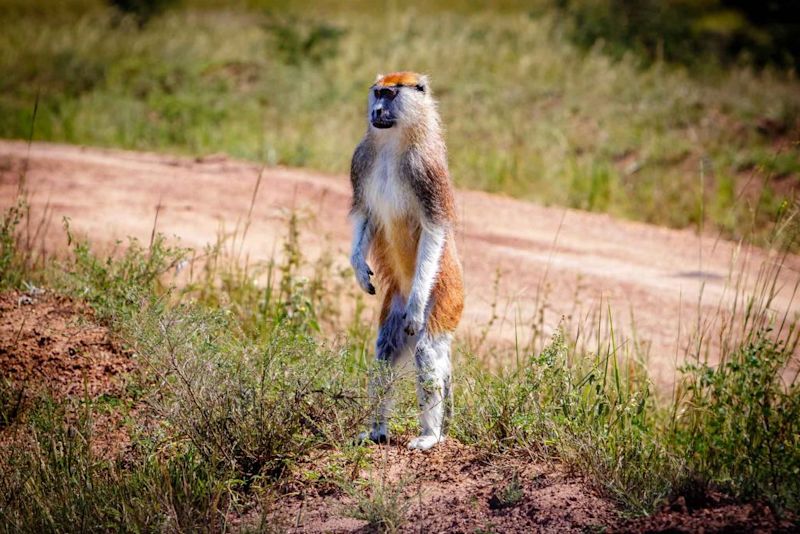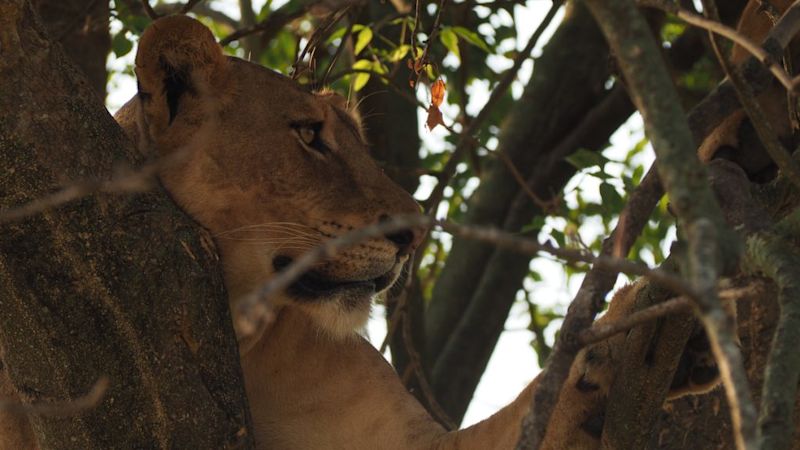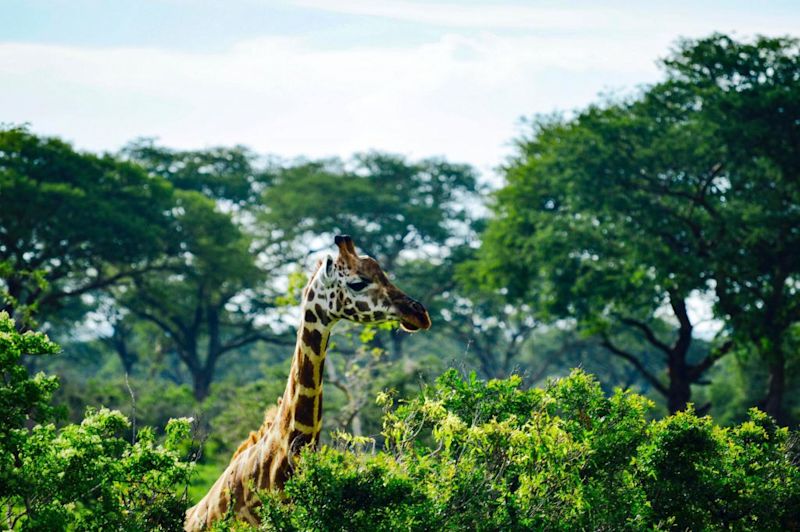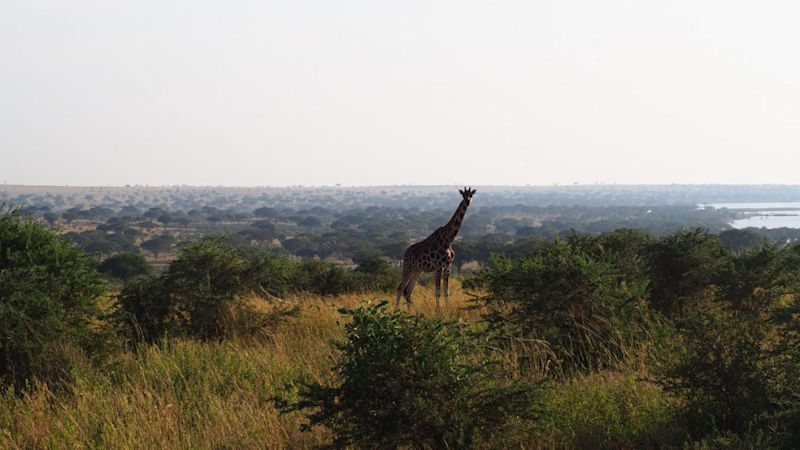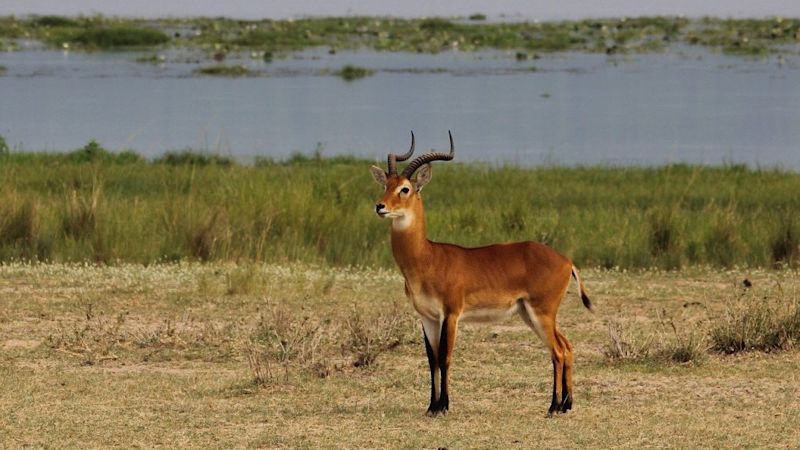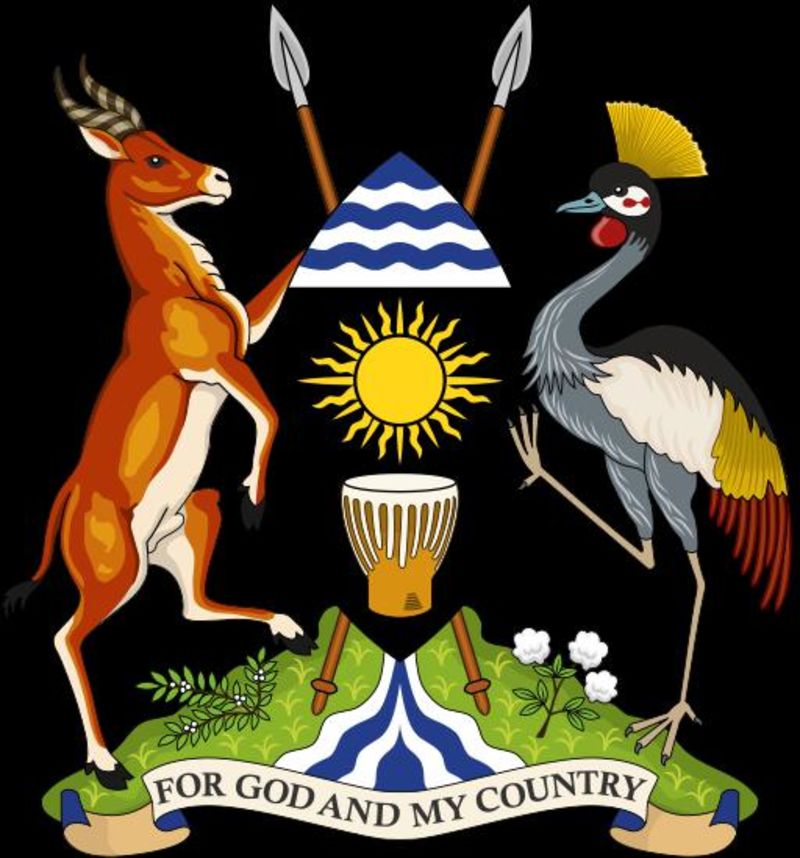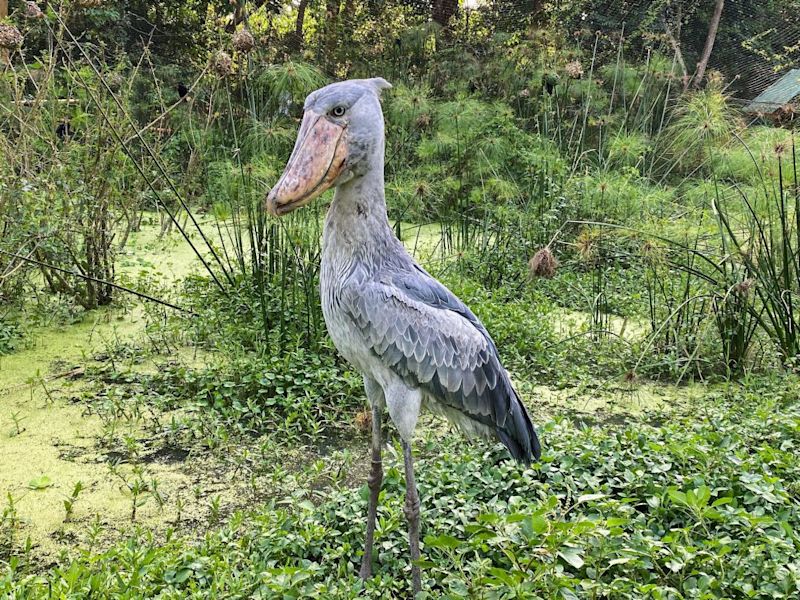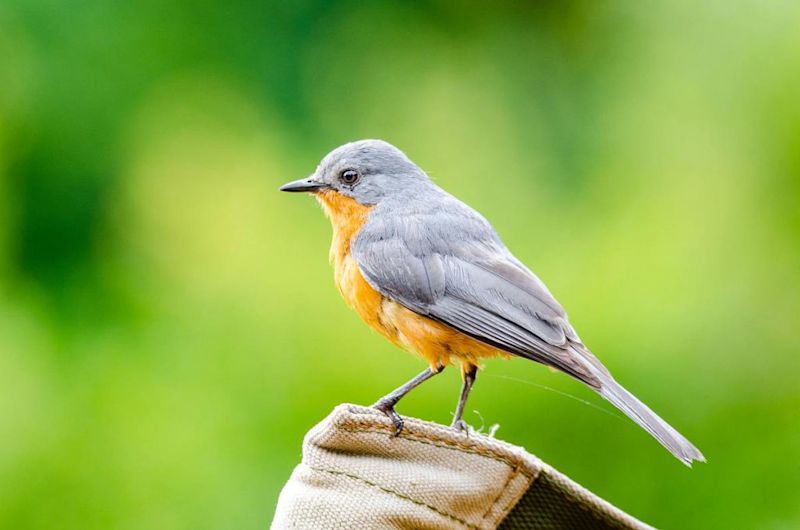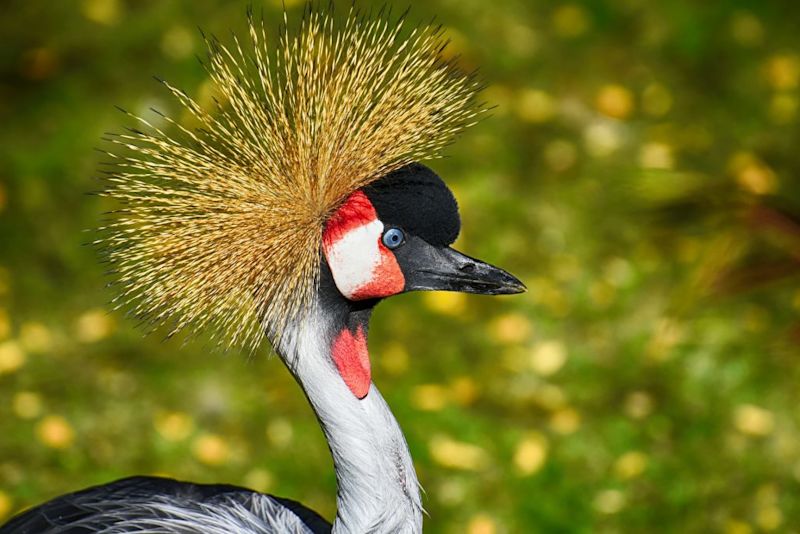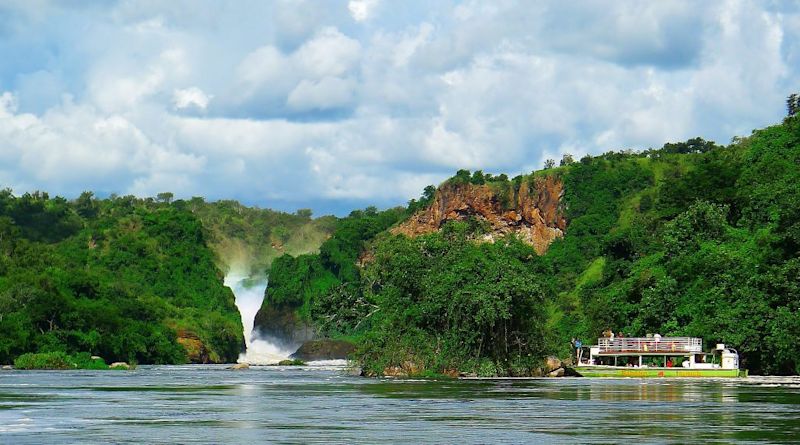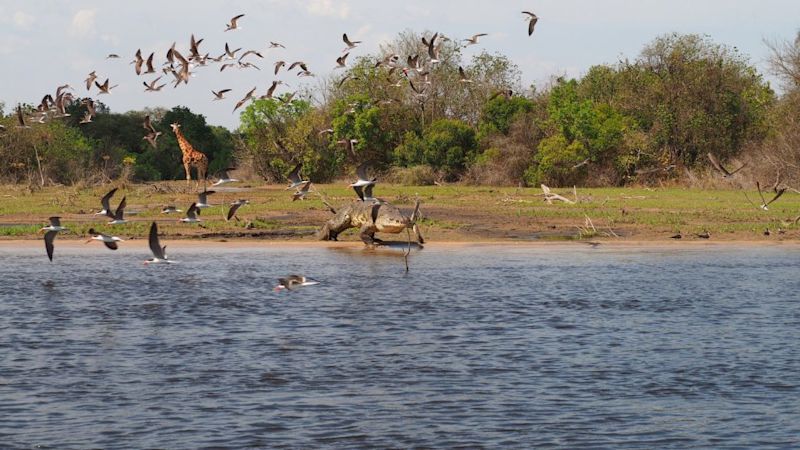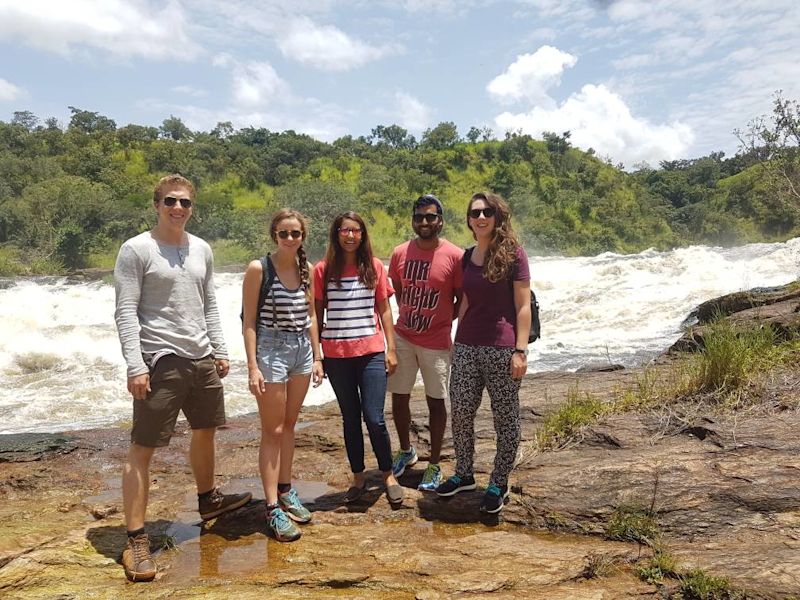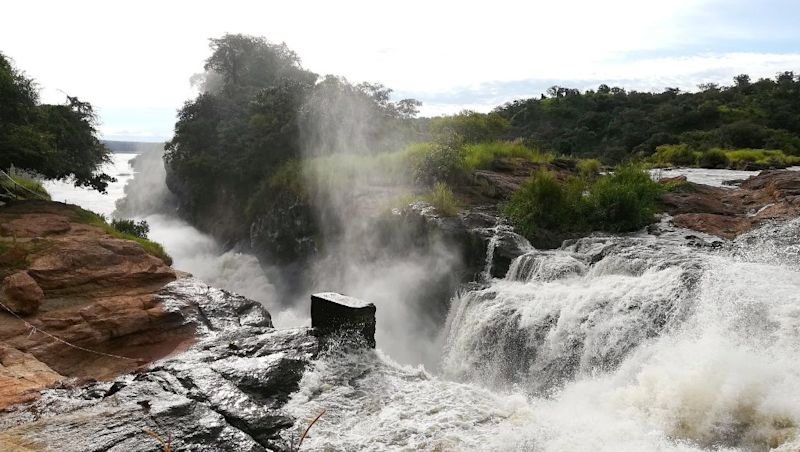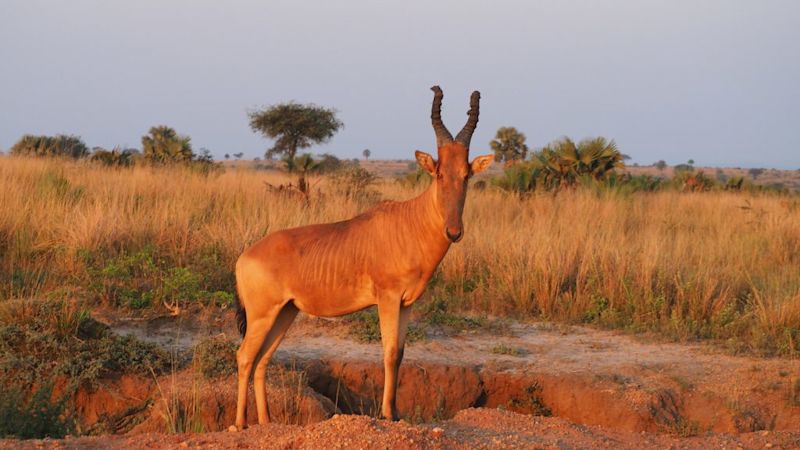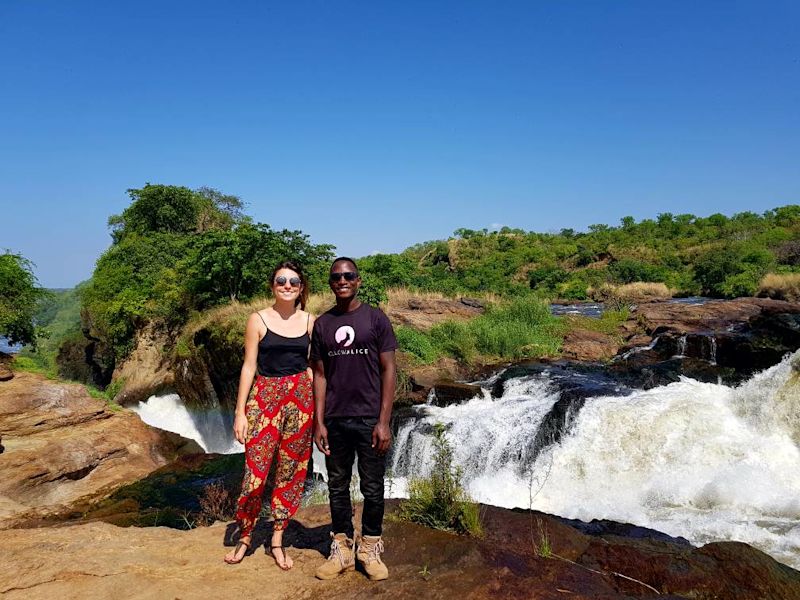Murchison Falls National Park is Uganda's largest and most exciting game park.
Located in the central west of the country, it lies within the East African Rift, and shares a border with Lake Albert. You can see it marked as #8 on the map below.
Map of famous locations in Uganda
The Victoria Nile flows through the middle of the park and empties into Lake Albert, creating a delta. En route the river hurtles over Murchison Falls creating the greatest natural water force on Earth!
Not only does Murchison Falls National Park encompass a variety of beautiful landscapes, it's also home to an abundance of wildlife. There are various large mammals to be sighted such as lions, elephants, giraffes and leopards. The park also boasts iconic birds, like the grey crowned crane and shoebill. Very welcoming of tourists, visitors to the park can enjoy game drives, boat safaris, and a waterfall hike.
I would highly recommend Follow Alice to anyone looking to have a well planned, organised trip! We used follow alice for our trip to Uganda for Gorilla trekking. Our guide Joseph Chiwa was so understanding, patient and welcoming!
- Shivani on TrustPilot
10 compelling reasons to visit Murchison Falls NP
Here now is our list of the top 10 reasons to visit Murchison Falls National Park!
1. Murchison Falls is spectacular
In the middle of Murchison Falls National Park is its star attraction: Murchison Falls
The relatively wide and fast-flowing Victoria Nile is forced – more or less in the middle of Murchison Falls National Park – to tighten up and squeeze through a narrow, seven-metre gap on the edge of an escarpment. This forces the water to charge over the edge and create a fierce, white-water waterfall. While the drop is only 43 m (141 ft), the force and power of the falls, as well as the dense jungle setting, make it a jaw-dropping sight to behold.
Ernest Hemingway famously crashed his plane just downriver from Murchison Falls in 1954.
Murchison Falls (or Kabalega Falls) is the most powerful waterfall anywhere along the various Nile rivers | Image by R. Waddington
Murchison Falls actually consists of two waterfalls: the main drop, and a smaller, more vertical one just to the north called Uhuru Falls. Anyone who's climbed Mt Kilimanjaro will recognise the name uhuru, and perhaps be aware that it means 'freedom' in Swahili.
Murchison Falls is the largest waterfall anywhere along the Nile and its various branches.
2. The scenery is varied and beautiful
Locals fishing on the Victoria Nile
The Victoria Nile bisects Murchison Falls National Park, creating a northern sector and southern sector. The northern half is known for its tall grasslands (interspersed with Borassus palms), acacia trees and riverine woodland. The southern sector has wooded savannah and dense tropical forest. In the west, where the Victoria Nile empties into Lake Albert, there's an extensive wetland.
Murchison Falls National Park, which is roughly the size of Cumberland, has many varied and beautiful landscapes and ecosystems.
Cape buffaloes and hippos wallow side by side in the Victoria Nile | Image by Daryona
The views throughout the park are beautiful and at times surprising. It's a great place for landscape photographers to flex their muscles. The twin waterfalls that constitute Murchison Falls are of course the gorgeous scene most commonly associated with the park. But also of particular note are the riverbanks and the Victoria Nile delta, both of which teem with waterbirds, waders and other wildlife.
A giraffe stands among Borassus palm trees in the northern part of the park
There are 775 plants species in Murchison Falls National Park. Of these, 145 are trees, and the species include acacia, sycamore fig, Borassus palm, mahogany, sausage and dombeya (wild pear). Strangler figs also grow in the forested parts of the park – these are tree species that grow up and around other, established trees, sometimes causing the support tree to eventually die.
3. The game spotting is excellent
A small muddy herd of Cape buffaloes, with an egret performing a subtle photo bomb to the right
According to a 2015 survey, there are at least 109 species of animals in Murchison Falls National Park. Many of them are large mammals that are safari favourites, like lions, leopards, antelopes and elephants. The existence of the Victoria Nile in the park is a major reason for the abundant wildlife – wallowers and other thirsty animals flock to the river and its wetlands. When you head to the water, you can expect to see hippos, elephants, crocs and more exciting wildlife.
The most commonly or easily sighted animals in the park are hippos, giraffes, Cape buffaloes, elephants, crocodiles and various antelopes, including Ugandan kobs.
African bush elephants are very populous in Murchison Falls National Park
The list below indicates the animals in the park that most commonly cause people to ooh and aah and flap their hands in their friends' faces to get them to look over there:
- Bush elephants
- Lions
- Leopards
- Cape buffaloes
- Rothschild's giraffes
- Spotted hyenas
- Patas monkeys
- Vervet monkeys
- Anubis baboons
- Jackson's hartebeests
- Uganda kobs
- Defassa waterbucks
- Grey duikers
- Bushbuks
- Bohor reedbucks
Our client Jerrold spotted this fierce-looking fella in May 2021
Top tip: going on a game drive with an experienced safari guide is a great idea, as he or she can identify unusual animals for you and share interesting facts about them.
4. Patas monkeys can be seen in their hundreds
Unlike most monkeys, which live in trees, patas monkeys live on the ground
The patas monkey is an Old World monkey found in the savannah of West, Central and Eastern Africa. It has a few names, including wadi monkey and hussar monkey. The orange fur on its head, back and flank makes it very distinct. Its belly and legs are mostly whitish. Male patas monkeys are much larger than the female of the species; adult males average around 12 kg (27 lb) while adult females only average around 6.5 kg (14 lb).
Murchison Falls National Park is one of the best places to see patas monkeys
Unlike most monkeys, patas monkeys live their lives primarily on the ground. Murchison Falls National Park is one of the best places to see them, as they live here in abundant numbers, enjoying the open savannah section of the park. And if you see one, you're like to see many, as they're social animals and live in large troops. In fact, their troops can number around 60 individuals!
Patas monkeys are the fastest primates in the world; they can run up to 55 km (34 miles) per hour!
Patas monkeys are the fastest primate in the world. They use this to aid in their survival. If a predator like a cheetah is spotted, the alpha male makes himself conspicuous and then charges off at great speed, thereby drawing the predator away from the rest of the troop. Chivalry indeed!
5. There are tree-climbing lions!
A lioness surveys the land while standing in an acacia tree
You may well have never really thought about this before, but most lions don't climb trees. It's not that they can't, of course, just that they don't. Instead, they enjoy sleeping, socialising and cleaning themselves in the grass and on rocks. But in some parts of Uganda and northern Tanzania, the lion populations are known for their tree-climbing habits. It makes for an especially exciting sight to see a lion, in a similar way to a leopard, lounging in a tree or standing and surveying the surrounding area from this helpful vantage point.
Close up of a beautiful lioness
Murchison Falls National Park is one of the few places where the lions like to climb and hang out in trees. They enjoy splayed trees such as sycamore figs and acacias as these trees have long, plain branches that are comfortable to lay down on.
Lions can be found throughout Murchison Falls National Park. The best sightings, however, are often found along the Queen's and Victoria Nile Tracks.
6. Rare Rothschild's giraffes live in the park
Close up of a Rothschild's giraffe in Murchison Falls National Park
Another great drawcard of Murchison Falls National Park is its population of rare and endangered Rothschild's giraffes. A subspecies of the northern giraffe, the Rothschild's giraffe is down to about 1,500 individuals and can only be seen in Uganda and a small portion of southern Kenya.
It's been proposed that the Rothschild's giraffe be called the Ugandan giraffe, as most of its numbers live there.
One of the distinguishing features of the Rothschild's giraffe is its ossicones, which are the skin-covered bony protuberances on its head. It has five ossicones, which is more than any other giraffe. The two parietal ossicones on top of the head are the tallest, and all giraffe species have these. But Rothschild's giraffes also have a smaller one behind each ear and one in the middle of the forehead.
But by far the easiest way to distinguish the Rothschild's giraffe from other giraffe species and subspecies is by looking at its lower legs. There are no markings here – the patches that cover the rest of its body fade away around the knee. The solid creamy colour of the lower legs almost make it look like the giraffe is wearing knee-high socks. 😀
A giraffe towers above the scrub – Rothschild's giraffes are one of the tallest giraffe species
Apart from elephants, whales and rhinos, giraffes have the longest gestation period of any mammal. Giraffes usually carry just one foetus at a time, and that's held in utero for 14 to 16 months.
Did you know that giraffes have the fourth longest gestation period of any mammal? Female giraffes carry a foetus for 14 to 16 months!
Murchison Falls National Park is one of the best places to see Rothschild's giraffes – it actually is home to well over half of all of such giraffes!
7. Ugandan kobs live here in great numbers
Ugandan kobs look similar to impalas, but are more sturdily built
The Ugandan kob is a highlight of Uganda safaris. One reason for this is its limited range: it can only be found in Uganda and small portions of South Sudan and the DRC. It's also the most famous of Uganda's antelopes; it even appears on the country's coat of arms.
The Ugandan Coat of Arms showcases a Ugandan kob as well a grey crowned crane (the national bird)
Ugandan kobs are often mistaken for impalas. And yes, the two species do indeed look similar. But interestingly, impalas and kobs are not part of the same genus. The Ugandan kob is a kobus, while the impala is the sole member of the genus aepyceros.
The Ugandan kob lives in open and wooded savannah, as well as grassland. Murchison Falls National Park has a large population of Ugandan kobs, so you should be able to see some of these graceful creatures on a safari there. When you do see them, you'll be able to tell the males from the females as only the former have horns.
8. There are 450 bird species, including the shoebill
The shoebill is an immediately recognisable bird
Shoebills (also known as whaleheads, whale-headed storks and shoe-billed storks) are large, distinctive and not particularly attractive birds. That iconically large beak seems oversized to say the least. But they're fascinating birds (perhaps partly for that reason).
Murchison Falls National Park is one of the best places in Africa to see shoebills.
Shoebills like to hang around in swamps, which is where they catch their prey. They're incredible hunters, going after animals that are only a little smaller then them, like monitor eels, lizards and even baby crocodiles! For a lively and more complete description of the shoebill, you might like to read The Shoebill: Or, the Most Terrifying Bird in the World. In Murchison Falls National Park, the best place to see shoebills is along the Victoria Nile between Nile Safari Lodge and the river delta at Lake Albert.
A pretty silverbird – these flycatchers often perch in the open, making them relatively easy to spot
Murchison Falls National Park is home to around 500 bird species. Some of the winged creatures that frequent the park and get bird-spotters (ahem) all aflutter are:
- Abyssinian ground hornbills
- Blue-headed coucals
- Red-winged grey warblers
- White-crested turacos
- Red-headed lovebirds
- Shoebills
- Black-billed barbets
- Red-throated bee-eaters
- Grey-headed, woodland and giant kingfishers
- Grey crowned cranes
- Speckle-fronted weavers
- Black-headed lapwings
- Palm-nut vultures
- Senegal thick-knees
- Squacco and goliath herons
- Denham's bustards
- Black-headed and papyrus gonoleks
- Silverbirds
The grey crowned crane is the national animal of Uganda
If you'd like a full list of the birds of Murchison Falls National Park, we can recommend Avibase. Migratory birds are present in the park from November to April.
If you love birds, please take note that January to March are the best months for birdwatching in Murchison Falls National Park.
9. You can go on a boat safari
A cruise boat heads towards Murchison Falls | Image by Teseum on Flickr
Boat safaris are a special experience that relatively few parks are able to offer. At Murchison Falls National Park you can enjoy a boat safari on the Victoria Nile. This allows you to see and appreciate different animals and aspects of the park.
You start the safari boat cruise 15 km downstream from Murchison Falls at Paraa, which means 'the place of hippos' in Luo. The most popular option is a cruise that takes you upriver through Fajao Gorge. The thickly forested walls rise up to enclose the river and remove the outside world from your mind. You feel you're escaping into a remote and secret world of primeval rhythms and cycles. Then, finally, you hear pounding water and by and by are rewarded with a view of the stunning Murchison Falls.
You can also go on a boat cruise about 15 km downriver to the delta where the Nile enters Lake Albert. This area is a magnet for birdlife, as well as game, and is incredibly lush and pretty. You can arrange to do a safari drive back to the park's headquarters at Paraa.
A Nile croc sends birds flying in all directions as it wades into the Nile, with a giraffe looking on
There are group as well as private boat safari tours on offer in the park. You can even opt for a fishing boat cruise if you want. The boats have roofs, which is handy for protecting you from the sun. There are a handful of different cruise departure times on offer, both in the morning and the afternoon. Those who are keen can opt for a sundowners cruise and do their safari viewing with a vino in hand!
Hot tip: the smaller the boat, the closer you can get to to the shore to see animals.
10. You can hike to the top of the waterfall
The Victoria Nile is a powerful force running roughly east to west through the park
Provided conditions are favourable, you can climb from the river up to the Top of the Falls Viewpoint on the river's south bank! This is a steep hike, but one that rewards you with an unparalleled view, a deafening soundtrack, and a refreshing spray.
You must take a boat cruise to access the start of the trail leading to the Top of the Falls Viewpoint. You then hike for around an hour to reach the view site. Most then catch a 4x4 ride back to Paraa. Don't like hiking? No worries, the road that takes you back to Paraa can also of course take you to the Top of the Falls Viewpoint.
The incredible (and rather wet) view from the top of Murchison Falls | Image by AnjaTravels
There are also further fantastic viewpoints one can visit besides the Top of the Falls Viewpoint, but these take time to reach, and so you'll need to add about another hour of hiking to your overall time.
Want to visit Murchison Falls National Park?
Jackson's hartebeests, which can be found in Murchison Falls National Park, live only in Uganda and Kenya
We love taking visitors to Murchison Falls National Park.
If you'd like to know more about the best time to visit Murchison Falls National Park, please read When is the best time to visit Uganda?
Standing at the top of Murchison Falls
Most people who head to Uganda to visit Murchison Falls also like to go gorilla trekking in Bwindi Forest, and many go hiking in the beautiful and otherworldly Rwenzori mountain range. Please check out our exciting Uganda itineraries to see the places and activities we feel make up the perfect Uganda holiday!
